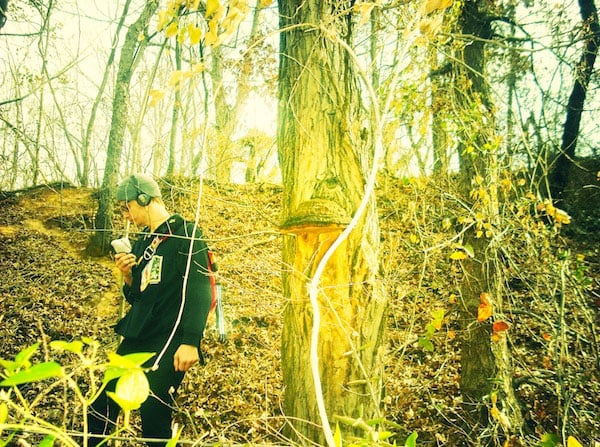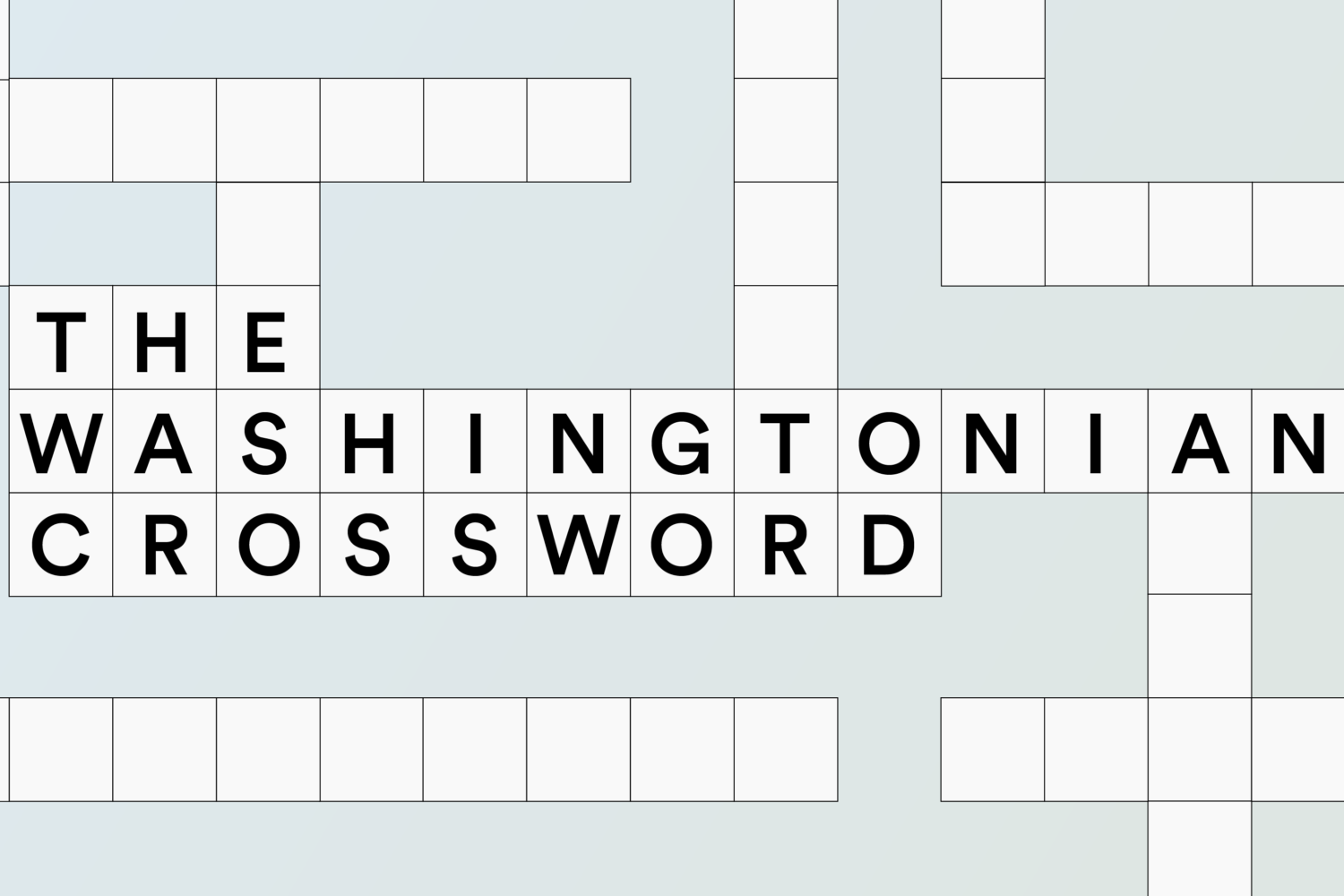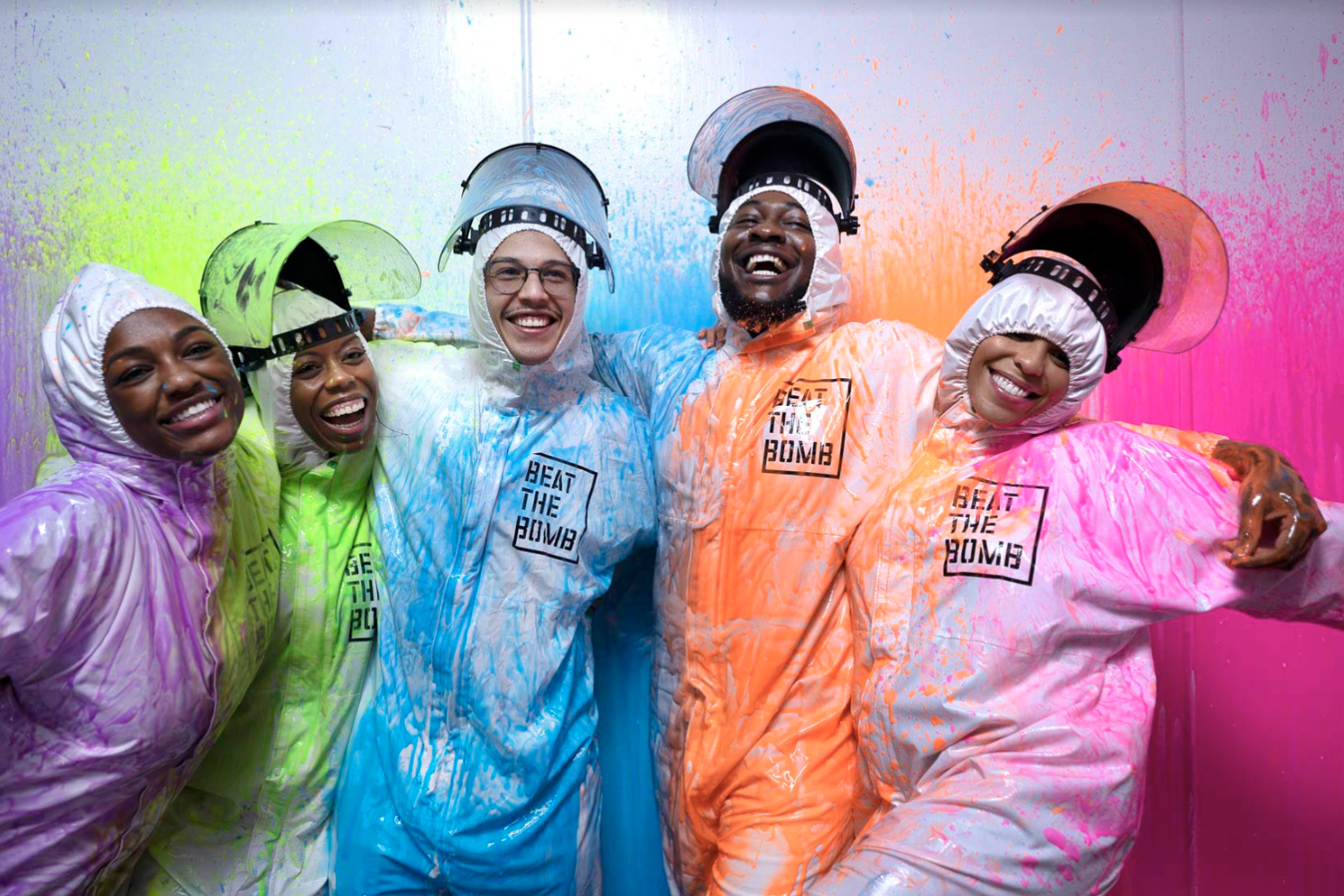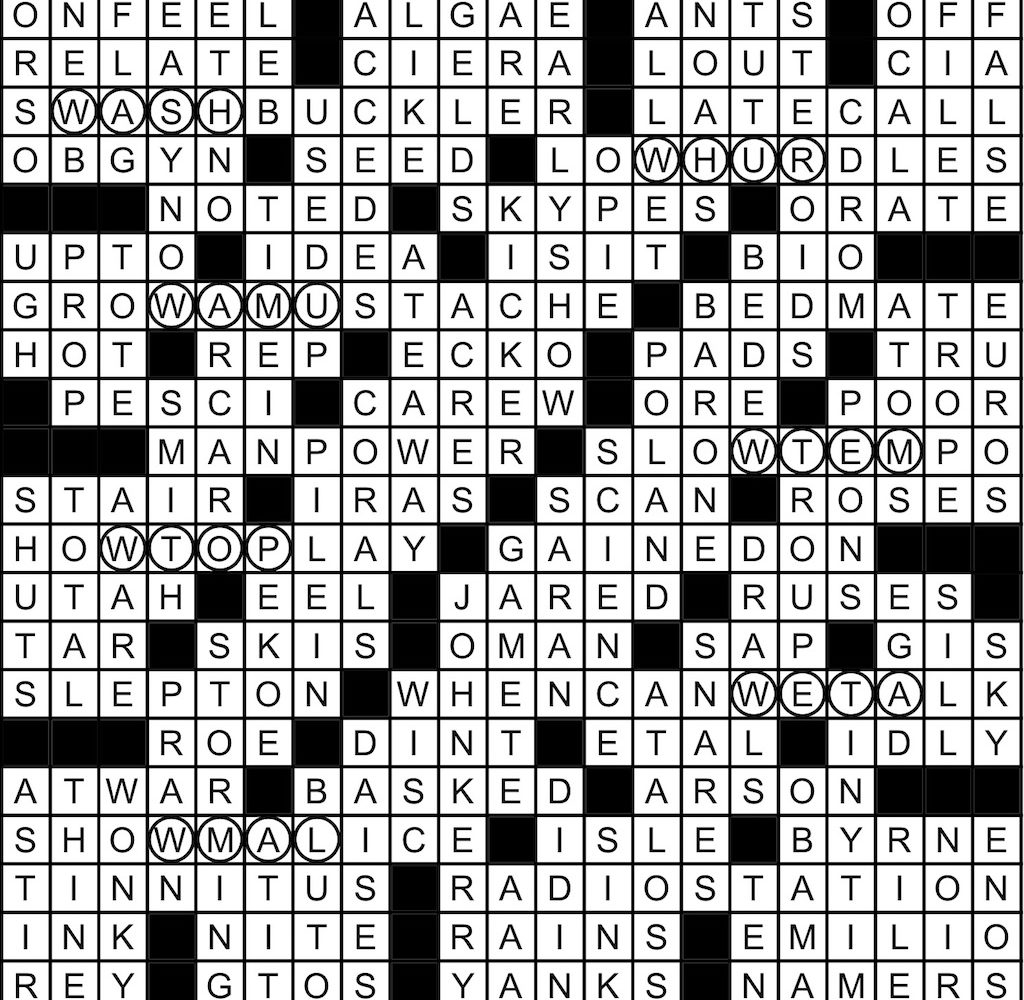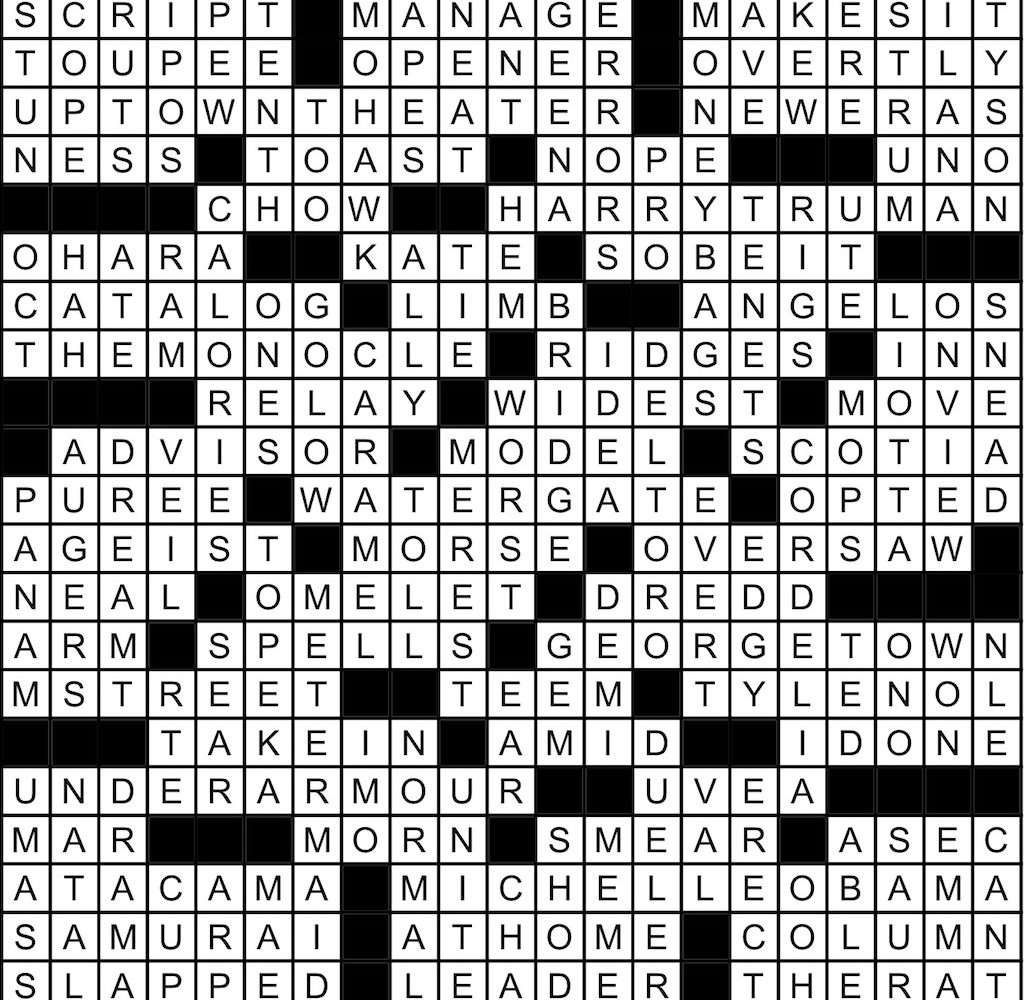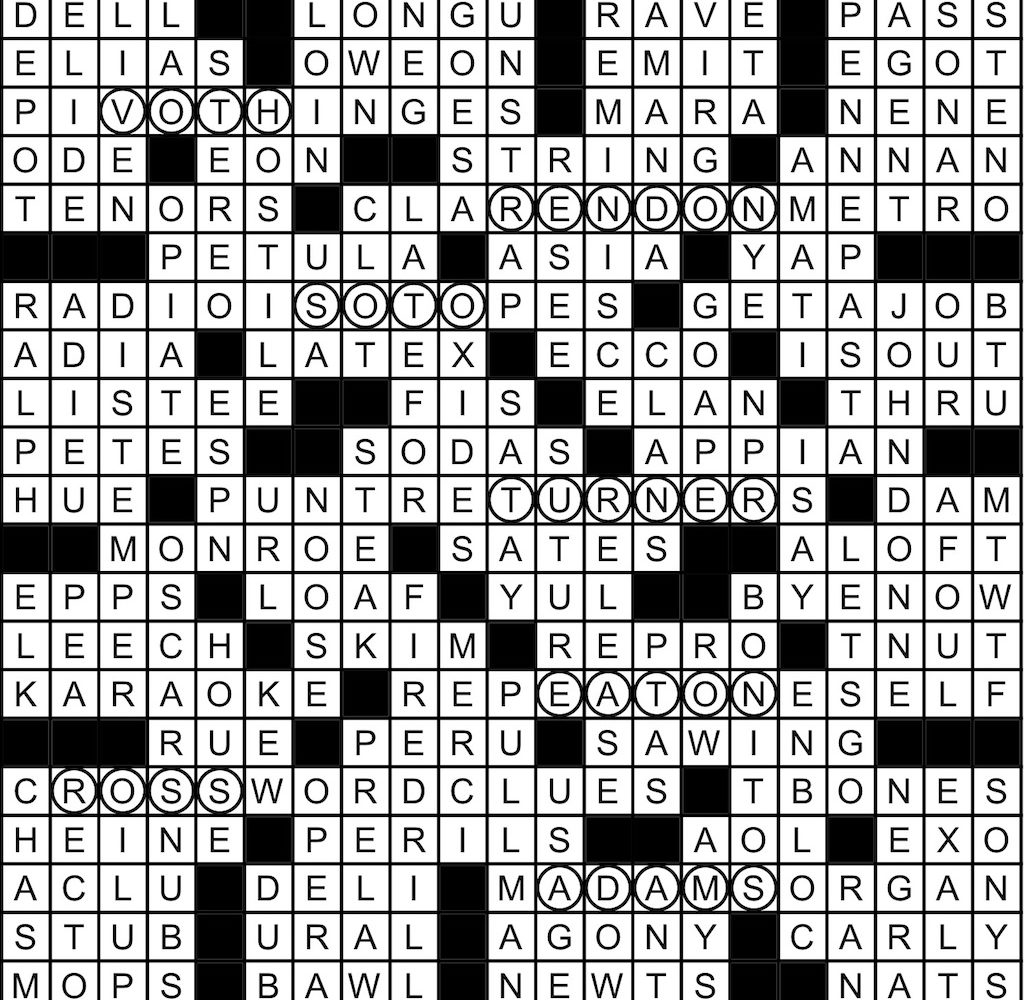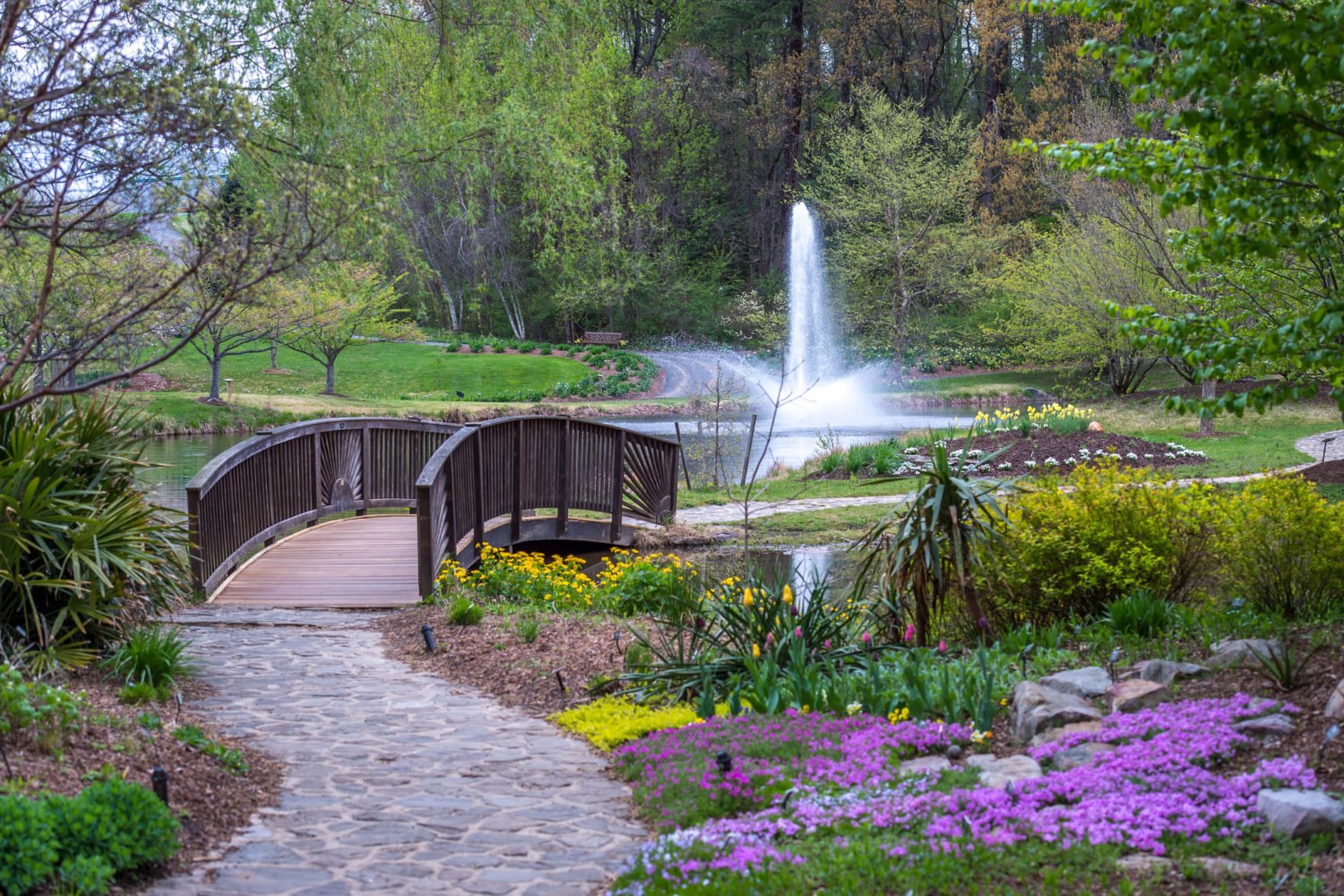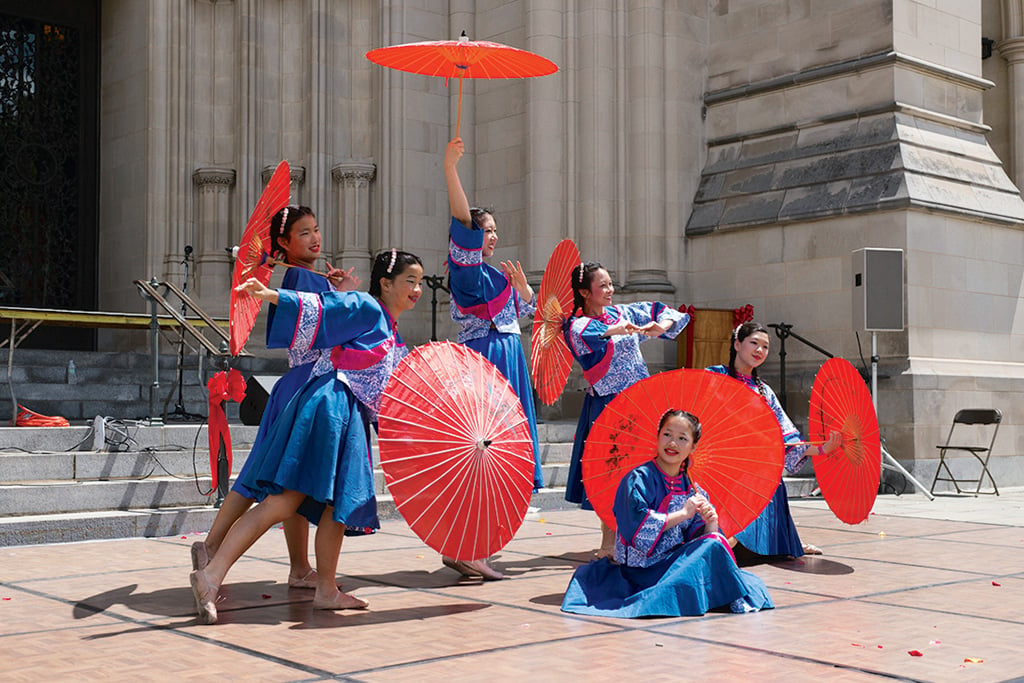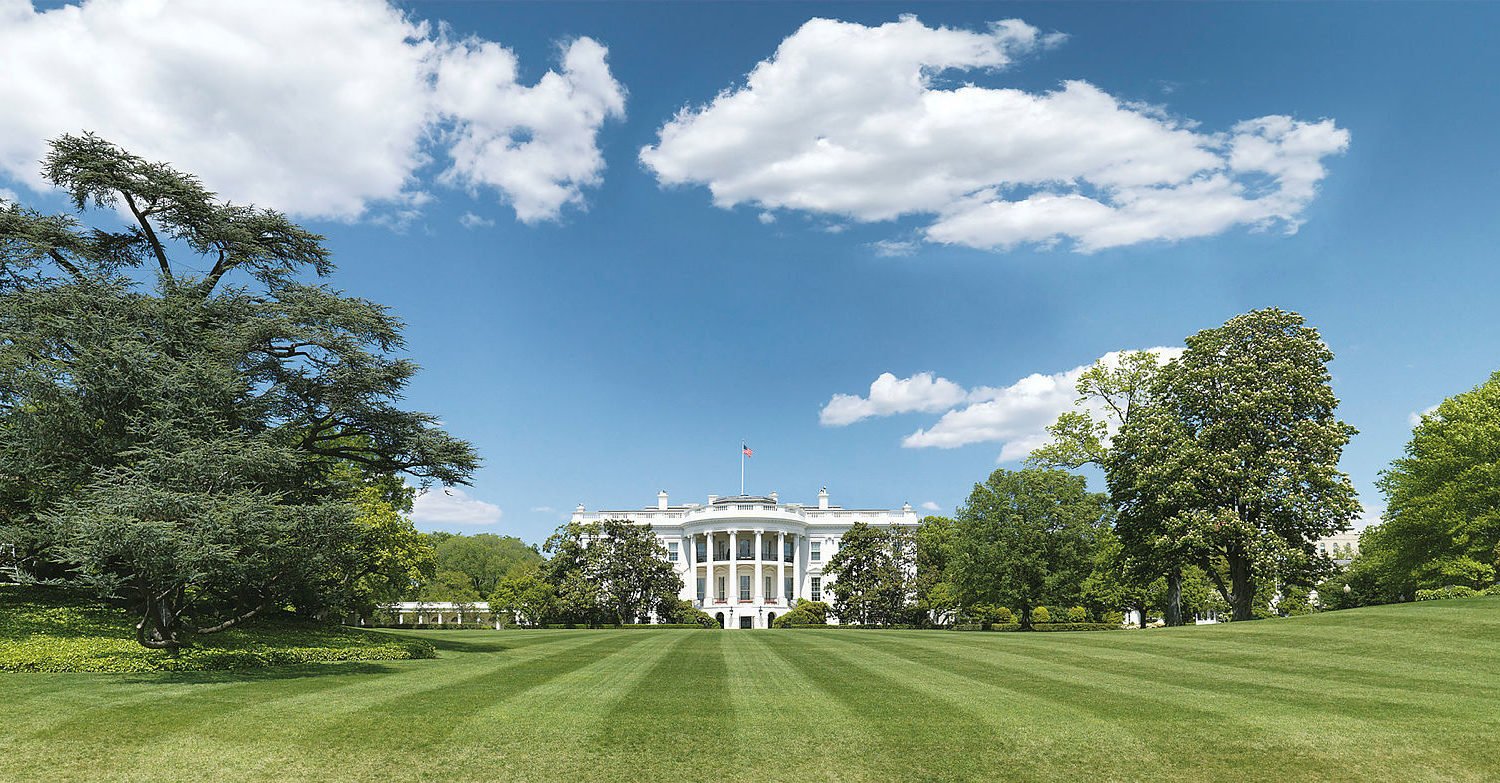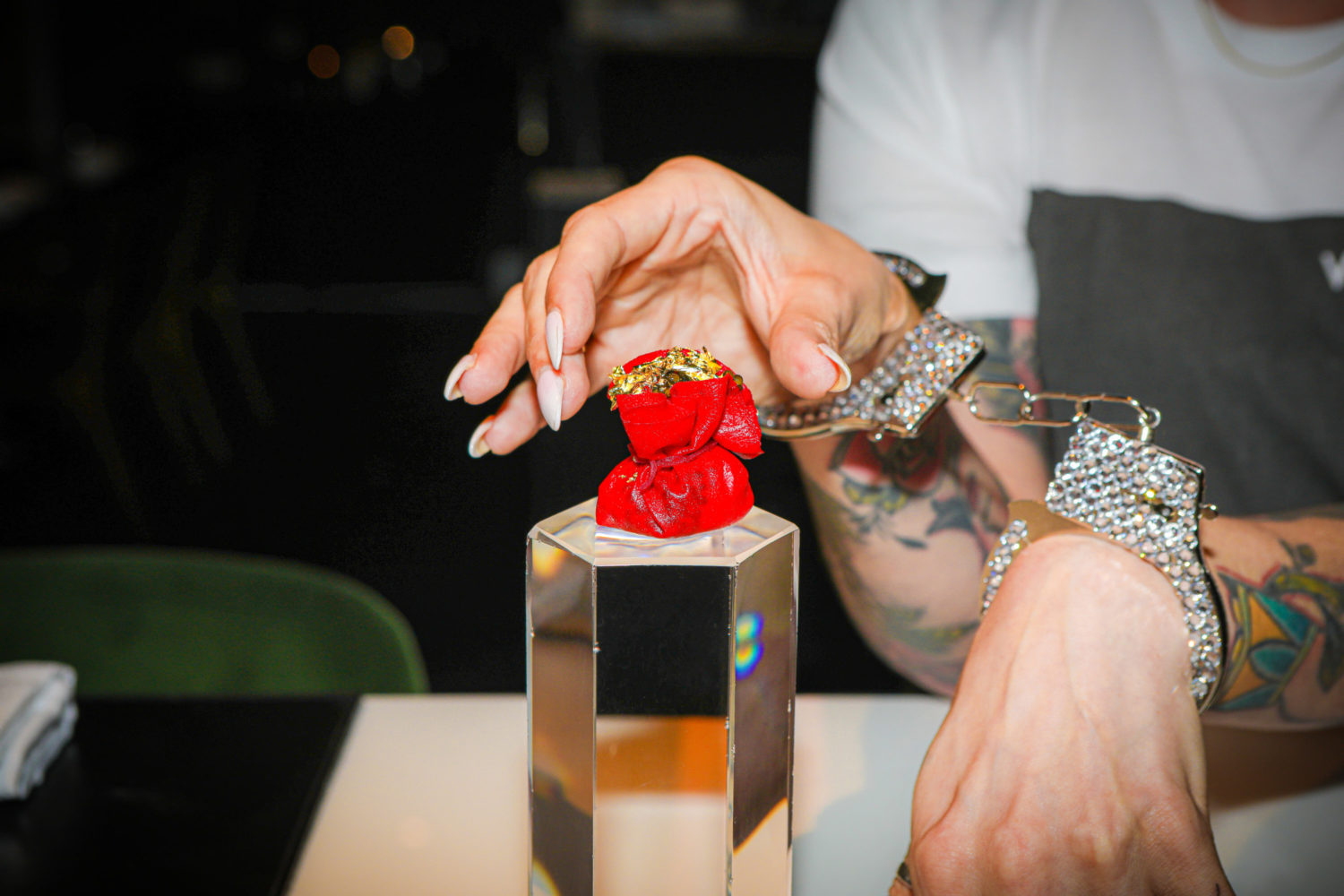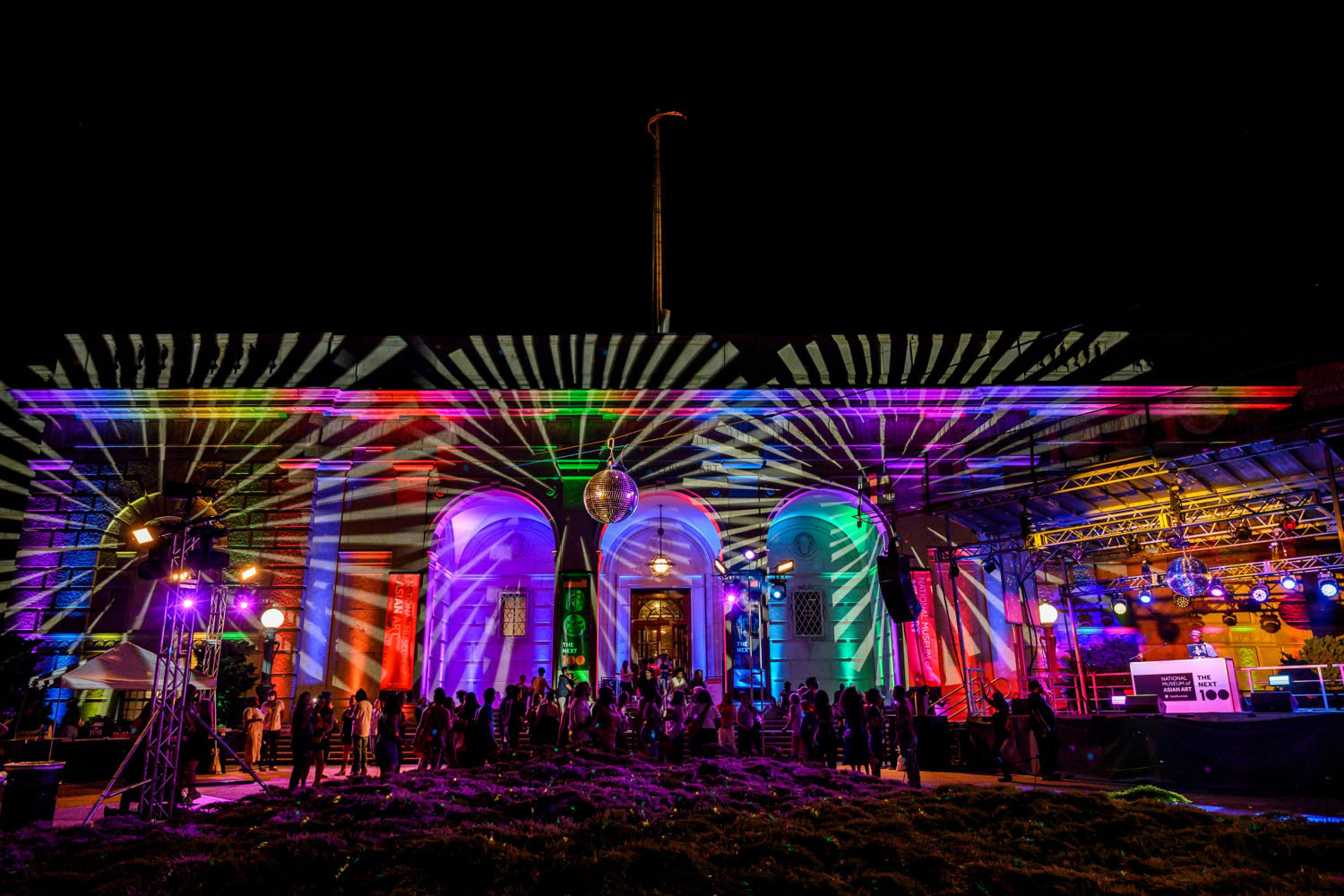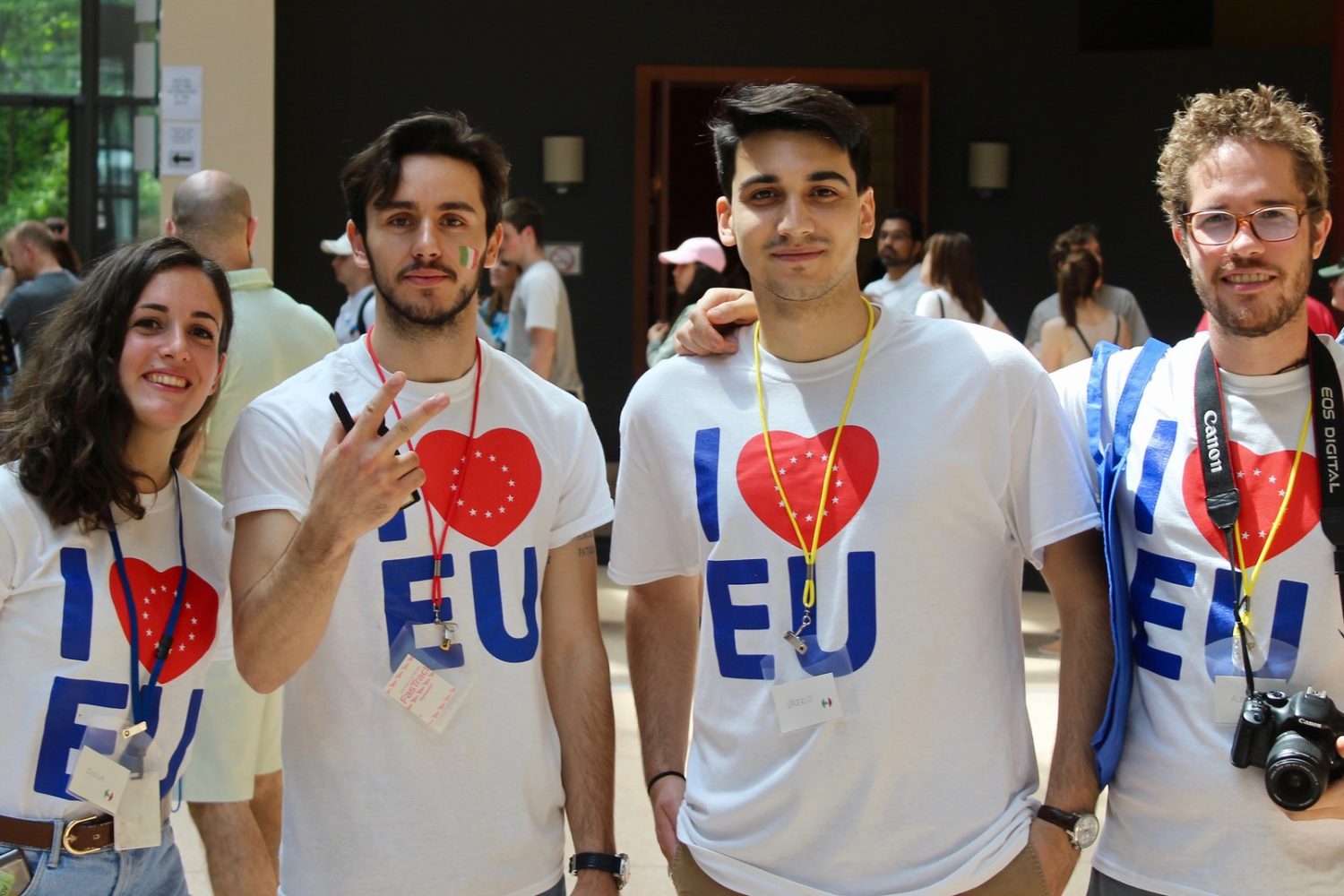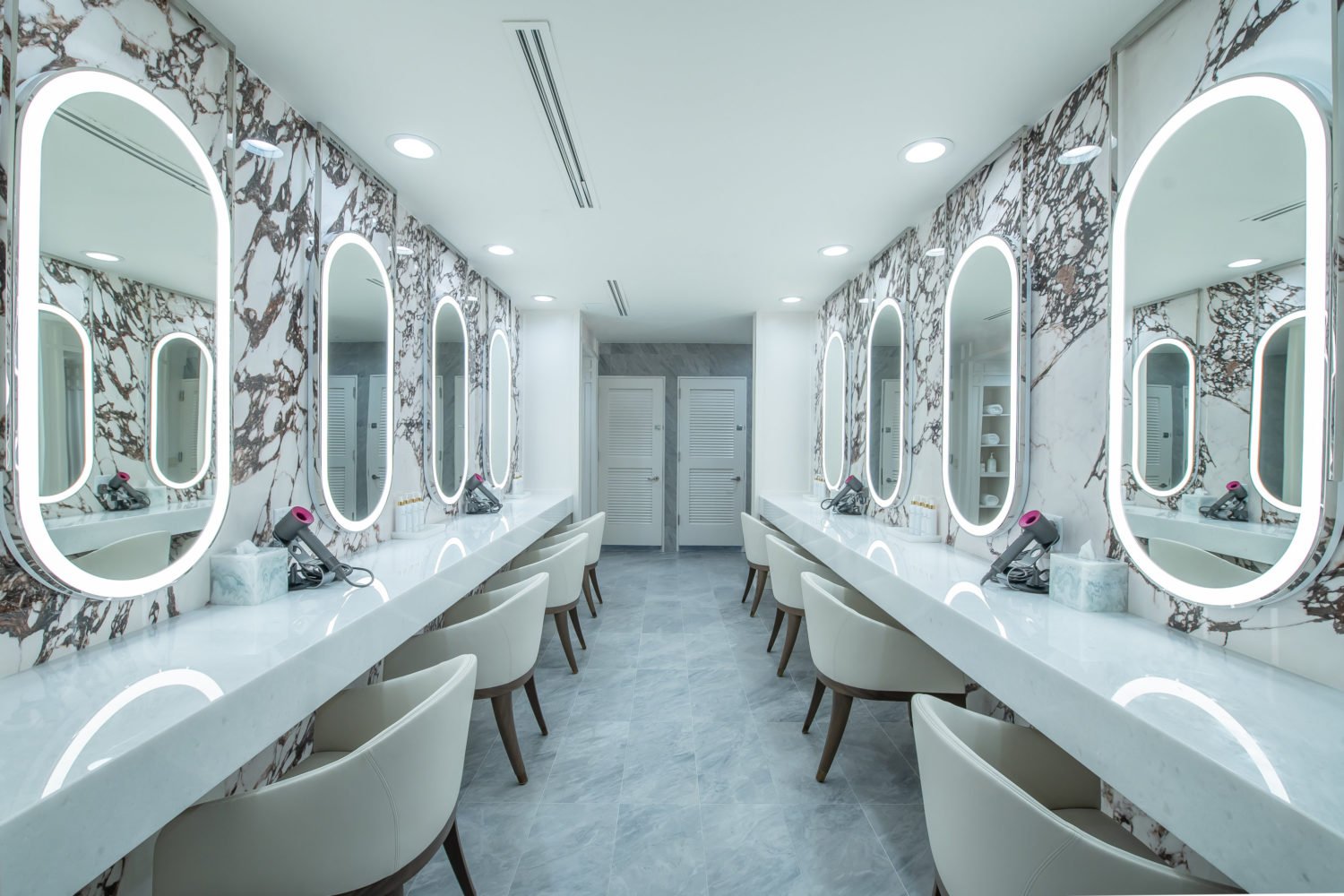Rob Peterson participating in the “Radio Ark Transmission” project. Photograph by Chris Kennedy.
Tackling social issues has long been a theme among conceptual artists, but as a new show at Anacostia’s Honfleur Gallery demonstrates, doing so can yield mixed results. Curated by Honfleur cofounder Briony Evans Hynson, “Visual Audio: Inquiries Into Found Media” features two artistic collaborations, each with a hyper-local focus. “Radio Transmission Ark,” organized by artists Robert Peterson, Lindsey Reynolds, and Kate Clark with Hirshhorn Museum music educator Jon William, is a refreshingly sensitive tribute to Southeast DC. The project is almost bewilderingly multidisciplinary—it includes a sketchy, in-progress “Memory Map” of Anacostia, additional maps peppered with notes on daily experiences, found objects from the area, zines of black-and-white photographs (on sale for $10 to $15), audio recordings, a radio transmission, and a Tumblr journal.
Reynolds and Peterson, multimedia artists and Washington newcomers who share an interest in oral history, are spending the month of January as Anacostia residents, getting to know the everyday minutiae of the neighborhood in a process Peterson terms “psychogeography field work.” They record and map ambient noise and tidbits of overheard speech. They collect rocks and discarded homework. The project’s centerpiece, which has unfortunately been dogged by technical problems, is an afternoon radio broadcast of sound collage and conversations with residents.
The portrait is just cohesive enough to illustrate the beauty of a neighborhood in flux, from its young residents and music history to its empty storefronts and graffiti. It’s art that doesn’t speak at its surroundings, but rather engages Anacostia in meaningful dialogue, thankfully avoiding the kind of condescension that often plagues contemporary art dealing with urban realities. “Native Stars,” which began as a piece of sound art by Williams and Clark and the teenage artists they mentor at Hirshhorn’s ArtLab, now serves as a vibrant memorial to one of the students, Navarro “Moochie” Brown, who was fatally shot in Southeast DC on January 10.
Toward the back of the gallery, “Baltimore Vernacular Preservation Society” by graphic designers Ryan Clifford and Joe Galbreath focuses on the colloquial traditions of Baltimore and other cities as preserved in 1970s-era signage. The installation includes prints and photographs that isolate and occasionally rearrange the visual elements of urban signs on recognizable backdrops, like neon orange and plywood. Its practical aspect, still in development, involves archiving and reviving hand lettering as a craft in East Baltimore—another area that’s struggled to recover from the aftermath of the 1968 riots—by working with the community, local sign painters, and MFA students at the Maryland Institute College of Art. Whether such a project ends up better serving the community or the graphic design students seems like a reasonable concern.
Despite their pop-art panache, many of the works in “Vernacular” are visually stale. Clifford may demonstrate the devotion of a taxonomist in his closely cropped photos of slogans advertising everything from “unusual meats” to the “biggest show of the year,” but the aesthetic merit of such vintage typography has long been mined by hipster design culture. One exception is Galbreath’s set of four letterpress prints inspired by his thesis work on Baltimore’s Globe Poster Printing shop. The careful layering of wood grain renders the gray type abstract and ethereal, like ghosts of letters past. Another treat is “Favorite Sounds,” a collaborative screen-print collage of what are presumably responses to a survey of favorite sounds and sayings, with results ranging from sign language to onomatopoeia to the Fresh Prince of Bel-Air theme song. Of Galbreath and Clifford’s works, it’s the closest the viewer gets to the show’s objective: a two-way conversation about shifting urban identities.
“Visual Audio” is at the Honfleur Gallery until February 24. For more information, visit the gallery’s website.

